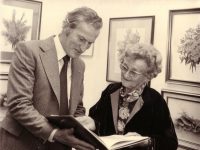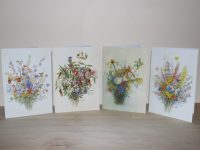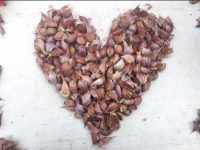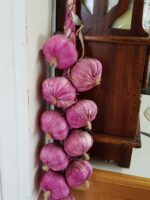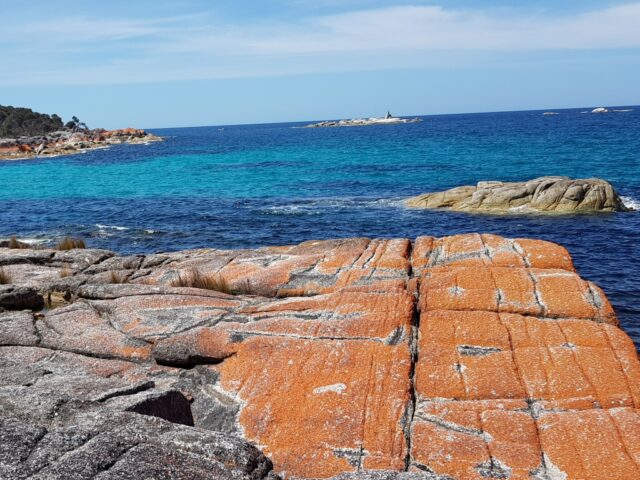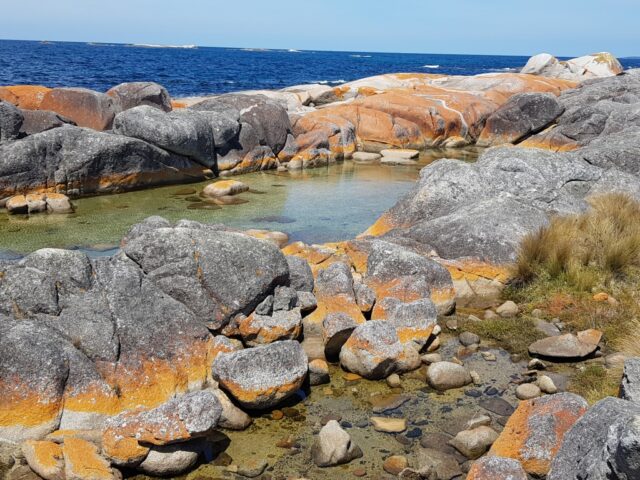My Grandmother, and how I came to love native plants
It is with great pride that I am introducing something very special to me to Gardening with Angus. My original inspiration in Australian plants was my maternal grandmother, a wildflower artist who had the unlikely name of Daisy Wood. She lived and worked most of her life in Victoria where she developed a strong love of Australian natural heritage and its preservation, which came from her father, she was also very concerned with social justice and healthy living, something I learnt a great deal from.
I have some wonderful childhood memories of long summer days spent at Daisy and my grandfather Tom’s Aberdeen Angus cattle stud at Moolap near Geelong. Daisy used to give us slide shows of her travels to see and paint wildflowers around Australia, and I vividly remember watching her paint a delicate mixed bunch of wildflowers in her studio. Such formative experiences are something that parents and grandparents pass on (sometimes unwittingly) to the younger generation!
I also have some great memories of her visits to my childhood home on the NSW Central Coast where we made bush walks to collect representative plants of particular wildflower communities. In particular, a mixed bunch of flowers from a friend’s farm on the Sydney sandstone country is a very special memory and we have decided to turn it into a gift card that is now available on our website shop along with three other mixed bunches from plant communities in Victoria and Western Australia .
Another part of Daisy’s legacy was a self published a book on her art, entitled In Harmony with Nature that was funded from sales of her paintings. She was inspirational in so many ways, as her work supported her after her long after her husband’s death. Indeed, during the Great Depression, Daisy hand painted greeting cards to sell to support her growing family.
We hope you like the Daisy Wood story and her artwork as much as we do. You can read more of the story and see the individual paintings, along with information about each painting at Daisy Wood and her Botanical Art >>>.
Also, every book purchase from the Gardening With Angus shop comes with a free Daisy Wood card if requested at the time of ordering.
Koonya Garlic Festival
I have become very attached to my local festival at my new home on the Tasman Peninsula. It is a wonderful community-based event that brings together a wide variety of people interested in growing their own food and in cooking it as well. This year’s festival will have some new faces such as mainland chef Christine Mansfield, as well as local talent Richard Weston and Alex Mullan from Pigeon Hole Café, garlic health advocate Ree van Galen and a host of local musicians providing entertainment through the day.
The garlic competition will be judged by Tino Carnevale, Professor Jim Reid and garlic aficionado Penny Woodward. The winners will receive a hand-crafted golden garlic globe sculpture/trophy by one of the founders of the Koonya Garlic Festival Colin Langridge. As in previous years Tino and I will be doing a two-hander on the main stage where we will be talking all things to do on the propagation of garlic and its relatives. There will be a garlic plaiting workshop, really handy to create a work of edible art, like the purple garlic plait in my kitchen-
Koonya is only an hour’s drive from Hobart airport if any of you mainlanders want to experience the delights of a regional food and gardening festival in Tasmania. It is on Saturday, 24th February 2018 – 10.00 am – 3.30 pm. I hope to see you there! Learn more here>>>
The Bay of Fires
I am gradually exploring the natural beauty of Tasmania and summer was a perfect time to go and see the coastal country of the north east at a place with the very evocative name of Bay of Fires. The name was given in 1773 by an English explorer, Tobias Furneaux who had accompanied Captain James Cook on his second journey of discovery to Australian shores. The story goes that Furneaux, whilst commanding the ship Adventure, became separated from Cook in his ship Resolution. During this period of separation Furneaux explored the eastern coast of what was then Van Diemen’s Land. He noticed a multitude of fires from the Aboriginal inhabitants in one particular spot and hence named it Bay of Fires.
Bay of Fires is now home to some beautiful little coastal towns that are well adapted to the casual visitor with fresh seafood being in plentiful supply. Another trademark in summer are the street plantings of the Western Australian flowering gum Corymbia ficifolia, that comes in varying shades of reds, oranges, pinks and whites.
The stunning feature of this windswept and incredibly beautiful piece of coastline is the masses of bright orange lichen growing on the rocky shores. These striking orange landforms contrast with the ever changing blue hues of the sea to create an endless series of beautiful scenes. The vegetation is made up of windswept trees, shrubs, grasses and small herbaceous species. Many of the trees and shrubs right on the water have transformed into low growing ground huggers, with the Tick Bush (Kunzea ambigua) being a prominent example along with low growing forms of Banksia marginata.

